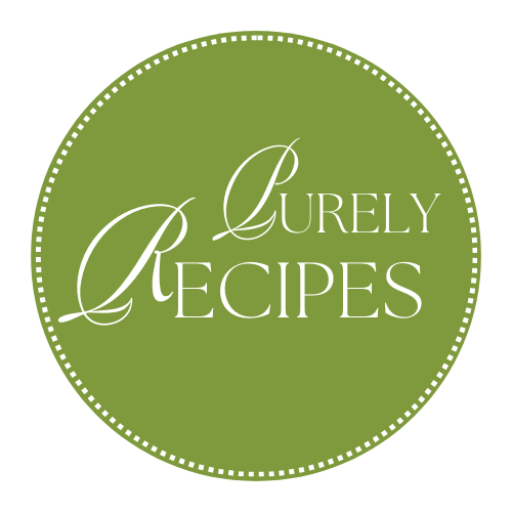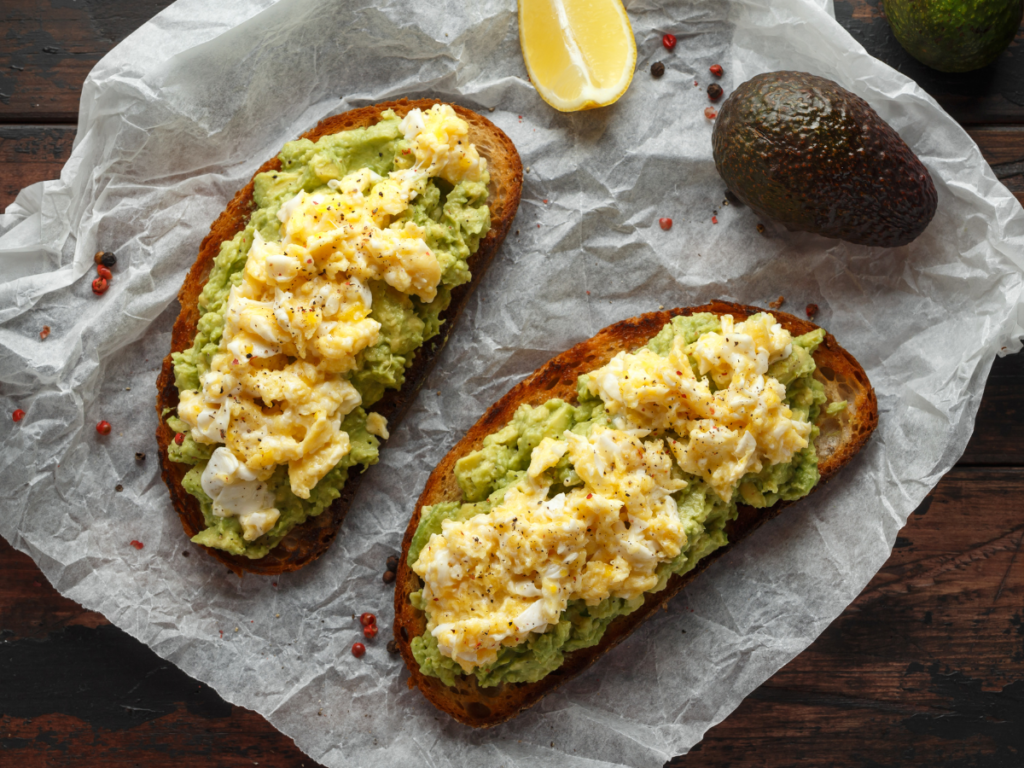
Introduction
Sourdough bread has experienced a resurgence in popularity, becoming a favorite among both home bakers and professional chefs. Its unique tangy flavor and chewy texture make it a standout choice for a variety of culinary uses, especially sandwiches. But what makes sourdough bread so special, and is it really the best choice for making sandwiches? In this comprehensive article, we’ll explore everything you need to know about sourdough bread and its suitability for sandwiches. From its history and nutritional benefits to practical tips for making and storing it, we’ll cover all the bases.
What is Sourdough Bread?
History and Origin
Sourdough bread is one of the oldest forms of leavened bread, with origins dating back to ancient Egypt around 1500 BC. The bread’s unique preparation method involves a natural fermentation process using wild yeast and lactobacilli. This traditional method of bread-making was the norm until the advent of commercial yeast in the late 19th century. The fermentation process not only leavens the bread but also imparts its characteristic tangy flavor and chewy texture.
Unique Characteristics
Sourdough bread stands out due to its natural leavening process. Unlike breads made with commercial yeast, sourdough relies on a starter—a mixture of flour and water that captures wild yeast and bacteria from the environment. This starter is what gives sourdough its unique flavor and texture. The wild yeast in the starter is less predictable and works more slowly than commercial yeast, resulting in a longer fermentation time. This slow fermentation is key to developing the complex flavors and chewy texture that sourdough is known for.
Nutritional Benefits of Sourdough Bread
Natural Fermentation Process
The natural fermentation process of sourdough bread breaks down the gluten and makes nutrients more bioavailable. This means that your body can absorb more vitamins and minerals from sourdough than from many other types of bread. The fermentation process also produces beneficial bacteria, which can aid in digestion and improve gut health. These bacteria help to break down phytic acid, an anti-nutrient found in grains that can inhibit the absorption of certain minerals.
Rich in Nutrients
Sourdough bread is rich in essential nutrients such as iron, magnesium, and B vitamins. It also contains antioxidants that can help protect your cells from damage. Additionally, sourdough has a lower glycemic index compared to other breads, meaning it causes a slower rise in blood sugar levels. This makes it a better choice for managing blood sugar levels and can be particularly beneficial for people with diabetes.
Taste and Texture of Sourdough Bread
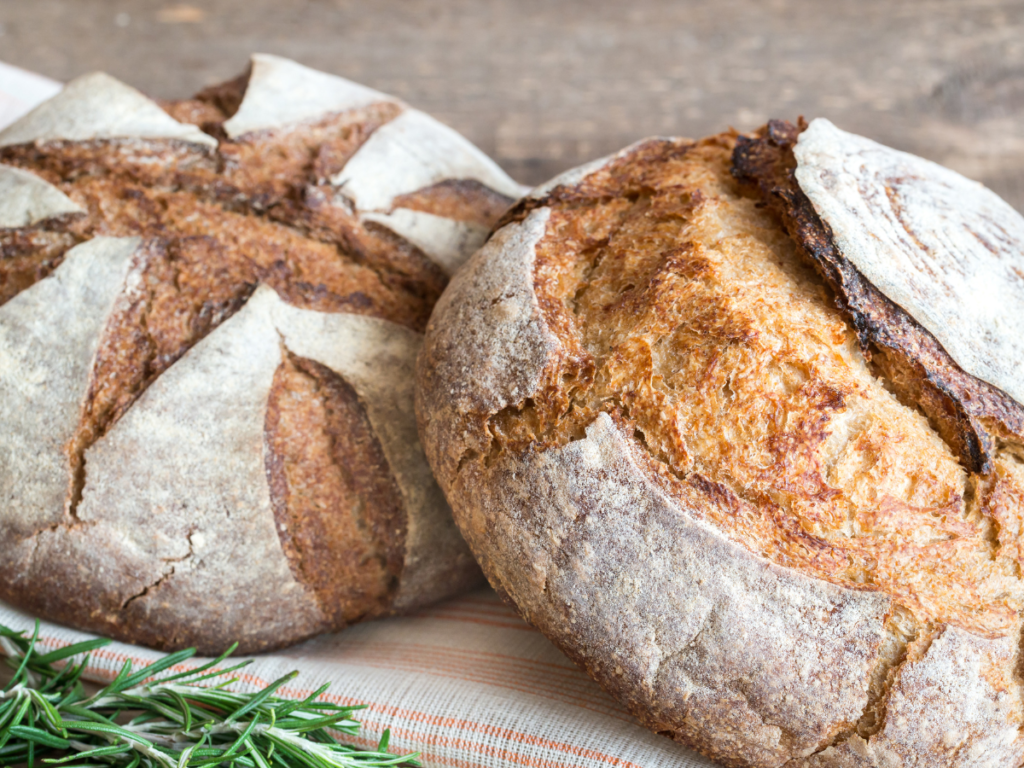
Flavor Profile
One of the defining features of sourdough bread is its complex flavor profile. The lactic acid produced during fermentation gives sourdough its characteristic tangy taste. This tanginess can vary depending on the specific strains of bacteria and yeast in the starter, the fermentation time, and the type of flour used. The result is a bread that has a depth of flavor unmatched by commercially yeasted breads.
Crust and Crumb
Sourdough bread is known for its thick, crunchy crust and soft, airy crumb. The crust is formed by the Maillard reaction during baking, which creates a deep, caramelized flavor. The crumb, or the interior of the bread, is open and airy, with irregular holes created by the gas produced during fermentation. This combination of a crunchy crust and a soft crumb provides a satisfying contrast in texture, making sourdough bread a delight to eat.
Why Sourdough Bread is Ideal for Sandwiches
Perfect Balance of Texture and Taste
The balance of a crispy crust and a soft interior makes sourdough ideal for sandwiches. The sturdy crust holds up well to moisture, preventing your sandwich from becoming soggy, while the chewy crumb provides a satisfying bite. This balance of textures makes every bite of a sourdough sandwich enjoyable.
Versatility with Different Fillings
Sourdough bread’s robust flavor can stand up to a variety of sandwich fillings. Whether you’re making a classic grilled cheese, a turkey and avocado sandwich, or a more adventurous creation, sourdough provides a flavorful foundation that enhances the ingredients. Its tangy taste pairs well with both savory and sweet fillings, making it a versatile choice for any sandwich.
Popular Sandwiches Made with Sourdough Bread
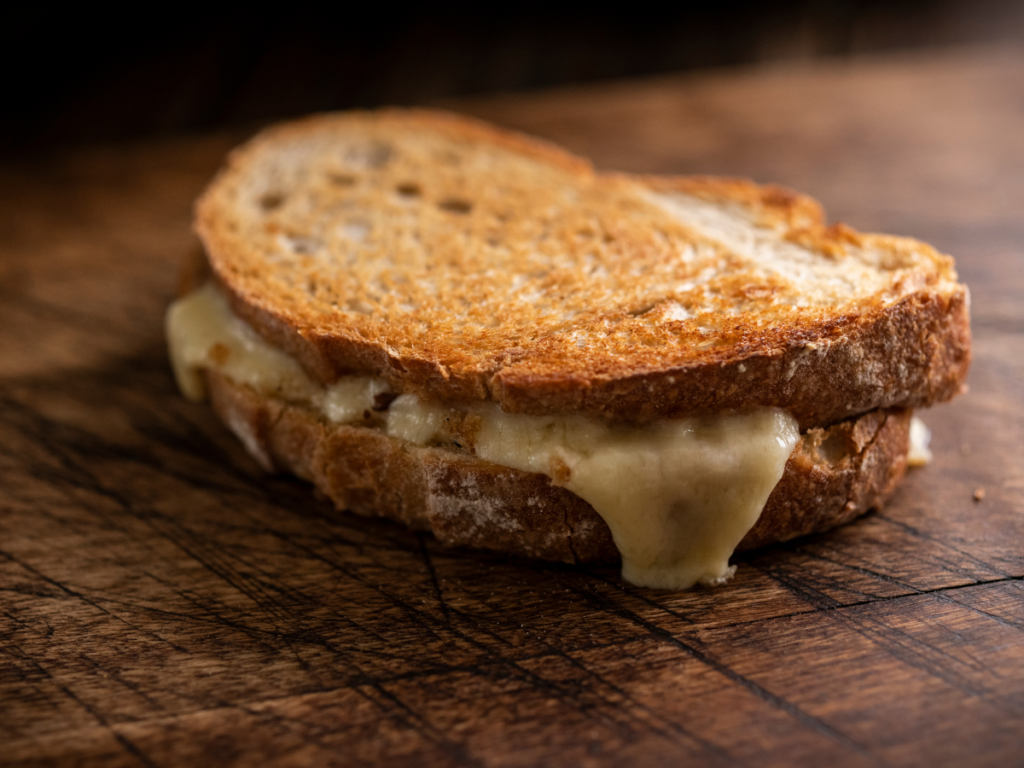
Classic Grilled Cheese
A grilled cheese sandwich made with sourdough bread is a game-changer. The bread’s crunchy exterior and tangy taste complement the melty cheese perfectly. The thick crust ensures that the sandwich holds together during grilling, while the chewy crumb absorbs the cheese, creating a gooey, delicious bite.
Turkey and Avocado Sandwich
Layering slices of turkey and avocado between sourdough bread creates a delicious and nutritious sandwich. The creamy avocado contrasts beautifully with the chewy bread, and the tangy flavor of the sourdough enhances the taste of the turkey. Add some fresh lettuce and a slice of tomato for a perfect lunch.
Caprese Sandwich
A Caprese sandwich with fresh mozzarella, tomatoes, basil, and a drizzle of balsamic glaze is elevated when made with sourdough bread. The bread’s flavor enhances the fresh ingredients, while its sturdy texture holds up well to the juicy tomatoes and creamy mozzarella. This sandwich is a perfect example of how sourdough can take a simple dish to the next level.
Making Sourdough Bread at Home
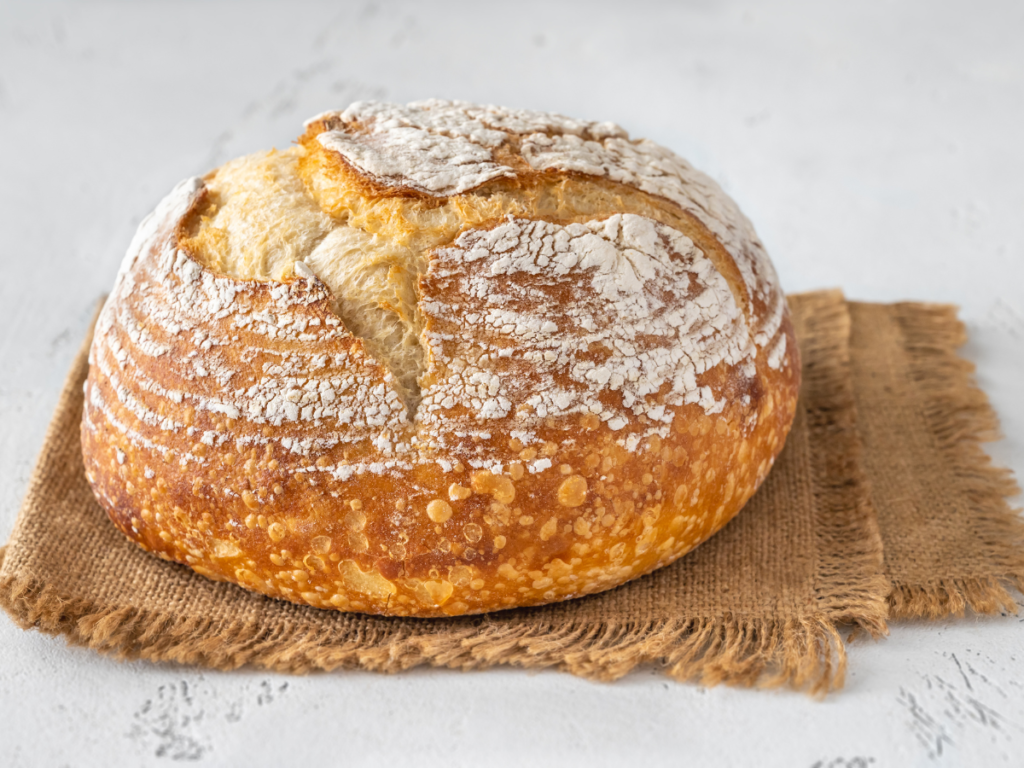
Basic Ingredients Needed
To make sourdough bread at home, you’ll need just a few basic ingredients: flour, water, salt, and a sourdough starter. The starter is key, as it contains the wild yeast and bacteria that will leaven the bread. You can either make your own starter from scratch or obtain one from a friend or online source.
Step-by-Step Process
Prepare the Starter
If you’re making your own starter, mix equal parts of flour and water in a jar and let it sit at room temperature. Every day, discard half of the mixture and add fresh flour and water. After about a week, your starter should be bubbly and ready to use.
Mix the Dough
Combine the starter with more flour, water, and salt to form the dough. The ratio of these ingredients can vary, but a typical recipe might use 500 grams of flour, 350 grams of water, 10 grams of salt, and 100 grams of starter.
First Rise
Let the dough rise at room temperature until it doubles in size. This can take anywhere from 4 to 12 hours, depending on the temperature and the activity of your starter.
Shape the Dough
Once the dough has risen, turn it out onto a floured surface and shape it into a loaf. Be gentle to avoid deflating the dough too much.
Second Rise
Allow the shaped loaf to rise again, either at room temperature or in the refrigerator. A longer, cooler rise will develop more flavor.
Bake
Preheat your oven to a high temperature (around 450°F or 230°C) and bake the loaf until it’s golden brown and sounds hollow when tapped on the bottom. This usually takes about 30-40 minutes.
Best Practices for Storing Sourdough Bread
Keeping It Fresh
To keep your sourdough bread fresh, store it in a paper bag or a bread box. Avoid plastic bags, as they can trap moisture and make the crust soggy. If you must use plastic, wrap the bread loosely to allow for some air circulation.
Freezing Tips
If you can’t finish your sourdough bread within a few days, slice it and freeze the slices. This way, you can toast or thaw individual slices as needed. To freeze, place the slices in a single layer on a baking sheet and freeze until solid, then transfer to a resealable plastic bag.
Comparing Sourdough Bread with Other Types of Bread
Whole Wheat Bread
Whole wheat bread is dense and hearty, made from flour that contains the entire grain. While it’s nutritious and has a nutty flavor, it lacks the tangy taste and chewy texture of sourdough. However, whole wheat sourdough is an option that combines the best of both worlds.
White Bread
White bread is soft and neutral in taste, making it versatile but not as flavorful as sourdough. It’s typically made with refined flour, which lacks the nutrients found in whole grain flours. Sourdough’s natural fermentation process adds depth of flavor and nutritional benefits that white bread can’t match.
Multigrain Bread
Multigrain bread is made from a variety of grains and seeds, offering a complex flavor and a higher nutritional profile than white bread. However, it doesn’t undergo the same fermentation process as sourdough, which gives sourdough its distinct taste and texture. Multigrain sourdough is another hybrid option that combines the nutritional benefits of multiple grains with the unique qualities of sourdough.
Potential Drawbacks of Sourdough Bread
Possible Allergen Concerns
While sourdough is easier to digest for some, it still contains gluten, which can be problematic for people with gluten intolerance or celiac disease. There are gluten-free sourdough recipes available, but traditional sourdough bread is not gluten-free.
Time-Consuming Process
Making sourdough bread from scratch is a labor of love. The process is time-consuming and requires patience and dedication. The lengthy fermentation time, while essential for developing flavor and texture, can be a barrier for those with busy schedules.
Tips for Buying the Best Sourdough Bread
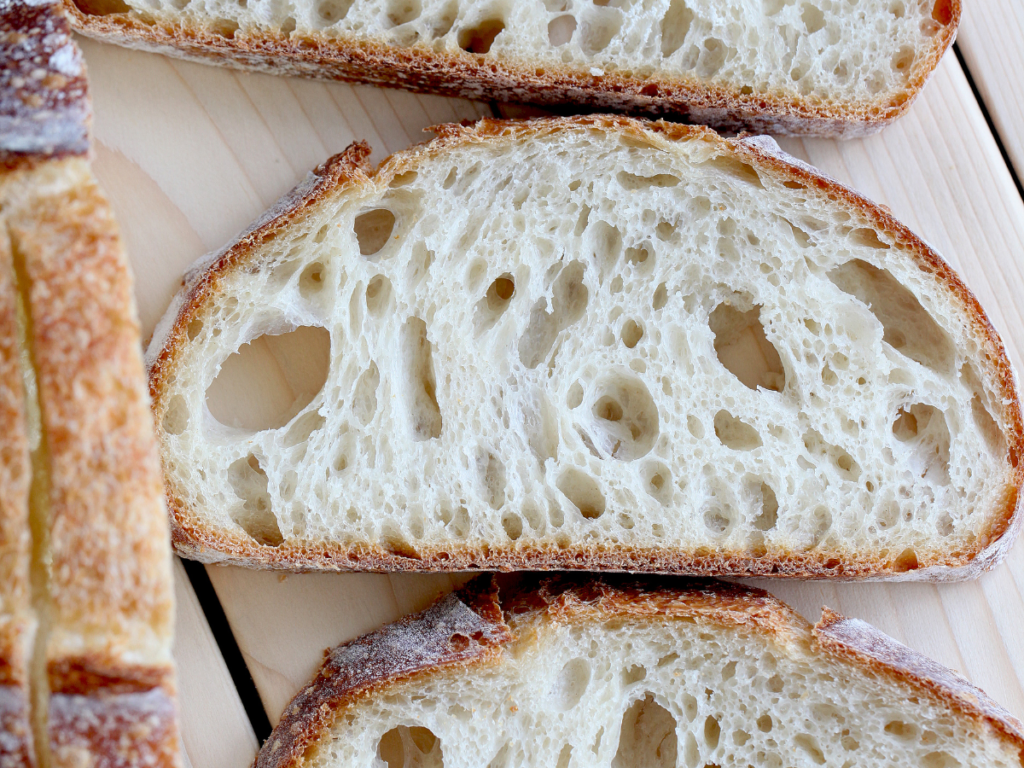
What to Look For
When buying sourdough bread
, look for a dark, well-baked crust, a tangy smell, and an open crumb structure with irregular holes. These are indicators of a good sourdough loaf. Avoid breads with a uniform, closed crumb and a pale crust, as these are signs that the bread was not properly fermented or baked.
Local Bakeries vs. Supermarkets
Local bakeries often produce higher-quality sourdough bread than supermarkets. The bakers at local establishments typically use traditional methods and high-quality ingredients. Supporting your local bakery not only ensures you get the best-tasting sourdough but also helps sustain small businesses in your community.
How to Enhance Sandwiches with Sourdough Bread
Pairing with Different Ingredients
Sourdough bread pairs well with a variety of ingredients, from savory to sweet. For a savory sandwich, try fillings like smoked salmon and cream cheese, roasted vegetables, or hummus and cucumbers. For a sweet option, consider peanut butter and honey or Nutella and banana slices. The tangy flavor of sourdough enhances the taste of both sweet and savory fillings.
Creative Sandwich Ideas
The possibilities for creative sandwiches with sourdough bread are endless. Try a breakfast sandwich with eggs, bacon, and avocado, or a vegetarian option with roasted peppers, goat cheese, and pesto. For a gourmet twist, make a BLT with heirloom tomatoes, arugula, and garlic aioli. The robust flavor and sturdy texture of sourdough can handle a variety of innovative fillings and toppings.
Health Considerations
Digestive Health
The natural fermentation process of sourdough can aid in digestion and improve gut health due to its probiotic properties. The beneficial bacteria produced during fermentation help to break down the gluten and phytic acid, making the bread easier to digest and more nutrient-dense.
Glycemic Index
Sourdough has a lower glycemic index compared to other breads, making it a better choice for managing blood sugar levels. The slow fermentation process helps to break down the starches in the flour, resulting in a bread that causes a slower, more gradual rise in blood sugar levels. This can be particularly beneficial for people with diabetes or those looking to maintain stable energy levels throughout the day.
Culinary Uses Beyond Sandwiches
French Toast
Sourdough makes excellent French toast. The bread’s texture absorbs the egg mixture well, resulting in a rich, flavorful dish. To make sourdough French toast, whisk together eggs, milk, vanilla extract, and a pinch of cinnamon. Dip slices of sourdough in the mixture and cook on a hot griddle until golden brown. Serve with maple syrup and fresh berries for a delicious breakfast treat.
Sourdough Croutons
Stale sourdough bread can be repurposed into croutons, adding a delightful crunch to salads and soups. To make croutons, cut the bread into cubes, toss with olive oil and your favorite seasonings, and bake in the oven until crispy. Sourdough croutons are flavorful and have a satisfying texture that enhances any dish.
Conclusion
Sourdough bread is not only delicious but also versatile and nutritious. Its unique flavor and texture make it an excellent choice for sandwiches, enhancing the overall eating experience. Whether you’re a seasoned baker or a sandwich enthusiast, sourdough is a fantastic addition to your culinary repertoire. From its rich history and health benefits to practical tips for making and storing it, sourdough bread offers a world of possibilities. So the next time you’re looking to elevate your sandwich game, reach for a loaf of sourdough and enjoy the delicious difference it makes.
FAQs
What bread is best for sandwiches?
The best bread for sandwiches depends on the type of sandwich and personal preference. Here are some popular options with more details:
- White Bread:
- Texture: Soft and fluffy.
- Uses: Perfect for classic sandwiches like PB&J, ham and cheese, and turkey sandwiches.
- Notes: Typically has a neutral flavor, making it versatile for various fillings.
- Whole Wheat Bread:
- Texture: Slightly denser and more robust.
- Uses: Great for healthier sandwiches, adding more fiber and nutrients.
- Notes: Pairs well with ingredients like turkey, avocado, and vegetables.
- Rye Bread:
- Texture: Dense with a slightly chewy texture.
- Uses: Commonly used for Reuben sandwiches, pastrami, and corned beef.
- Notes: Has a distinct, slightly tangy flavor that complements strong, savory fillings.
- Sourdough Bread:
- Texture: Chewy with a crispy crust.
- Uses: Excellent for grilled cheese, paninis, and sandwiches with robust flavors.
- Notes: The tangy flavor adds a unique taste to the sandwich.
- Ciabatta:
- Texture: Crispy on the outside, airy and soft on the inside.
- Uses: Ideal for Italian-style sandwiches with meats like salami, prosciutto, and fresh mozzarella.
- Notes: Holds up well to wetter ingredients like tomatoes and dressings.
- Baguette:
- Texture: Crunchy crust with a soft interior.
- Uses: Perfect for French-inspired sandwiches like jambon-beurre (ham and butter).
- Notes: Its sturdy structure is great for hearty fillings and long sandwiches.
What is sourdough bread best for?
Sourdough bread is versatile and can be used in various dishes:
- Grilled Cheese:
- Reason: The tangy flavor and hearty texture pair well with melted cheese.
- Tip: Try using a mix of cheeses like cheddar and Gruyère for a gourmet twist.
- Avocado Toast:
- Reason: The chewiness of sourdough complements the creaminess of avocado.
- Tip: Add toppings like cherry tomatoes, radishes, or a poached egg for extra flavor.
- Paninis:
- Reason: Sourdough holds up well under the press and grilling.
- Tip: Use fillings like roasted vegetables, cheese, and meats for a delicious panini.
- Breakfast Toast:
- Reason: Simply toasted with butter or jam, the flavor of sourdough shines.
- Tip: Try honey, nut butter, or ricotta cheese for variety.
- Soup Companion:
- Reason: Its robust texture makes it perfect for dipping into soups.
- Tip: Pair with creamy soups like tomato bisque or clam chowder for a satisfying meal.
Is there a difference between sourdough bread and sourdough sandwich bread?
Yes, there are notable differences:
- Shape and Size:
- Traditional Sourdough: Often baked as a round or oval loaf, with an irregular shape.
- Sourdough Sandwich Bread: Typically baked in a loaf pan, resulting in uniform, rectangular slices ideal for sandwiches.
- Texture:
- Traditional Sourdough: Has a chewy, dense crumb and a thick, crispy crust.
- Sourdough Sandwich Bread: May be slightly softer and less chewy to make it easier to bite through when making sandwiches.
- Crust:
- Traditional Sourdough: Features a thicker, crustier exterior.
- Sourdough Sandwich Bread: Might have a thinner crust for ease of slicing and eating, making it more sandwich-friendly.
- Flavor:
- Both types share the characteristic tangy flavor from the natural fermentation process, but sandwich bread might have a milder taste to appeal to a broader audience.
Should I toast sourdough bread?
Toasting sourdough bread is a matter of personal preference, and each option offers unique benefits:
- Toasting:
- Benefits: Brings out a deeper, nuttier flavor and adds a pleasing crunch.
- Uses: Great for sandwiches that benefit from a crispy texture, like grilled cheese or BLTs.
- Tip: Toast lightly to avoid making it too hard to bite through.
- Untoasted:
- Benefits: Retains the bread’s natural chewiness and softer texture.
- Uses: Ideal for sandwiches where a softer bite is preferred, such as avocado toast or cold cuts.
- Tip: Fresh sourdough has a wonderful texture that can be enjoyed without toasting.
Choose to toast if you enjoy a warm, crisp exterior with a slightly chewy interior, or leave it untoasted for a softer, more delicate sandwich experience.
Suggested Subjects
Gluten-Free Sourdough Bread Recipe: Provides a recipe for making gluten-free sourdough bread, which could appeal to readers interested in gluten-free options.Is Sourdough Bread OK if You Are Gluten-Free?: Discusses whether sourdough bread is suitable for those with gluten intolerance, providing important dietary information.What is the Best Gluten-Free Flour to Use for Sourdough Starter?: Explores the best types of flour for creating a gluten-free sourdough starter, useful for readers looking to bake their own bread.How Do You Keep a Gluten-Free Sourdough Starter?: Offers tips on maintaining a gluten-free sourdough starter, an essential part of the sourdough bread-making process.Why Won’t My Gluten-Free Sourdough Bread Rise?: Provides troubleshooting advice for common issues faced when baking gluten-free sourdough bread.
